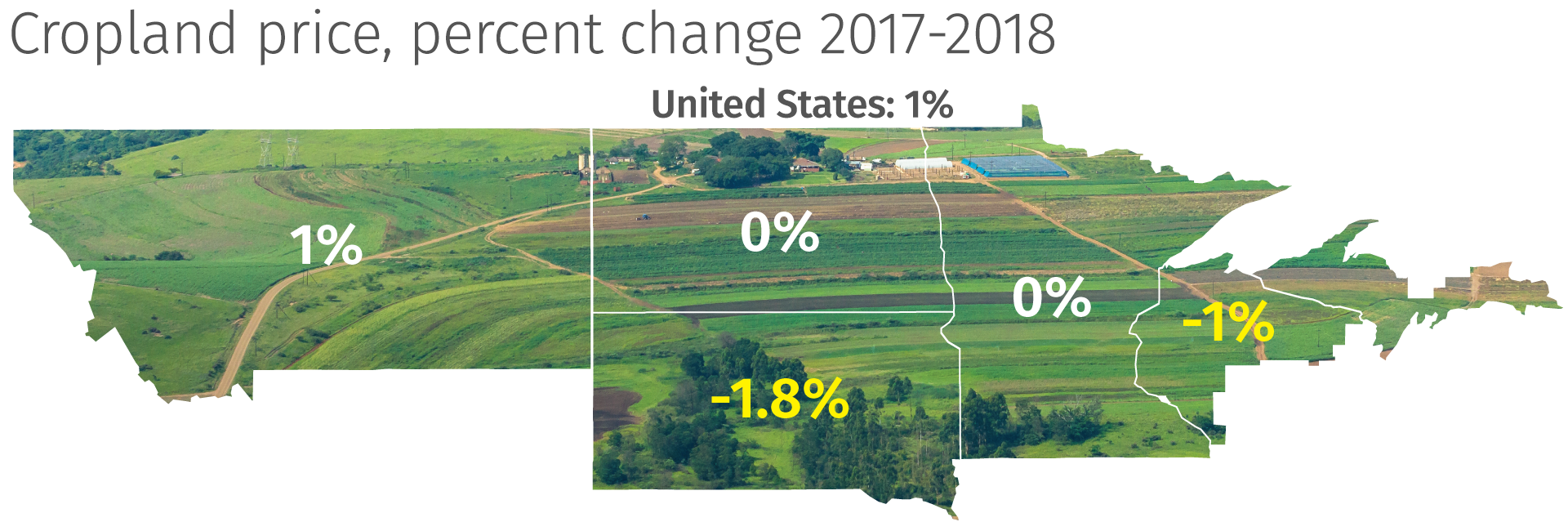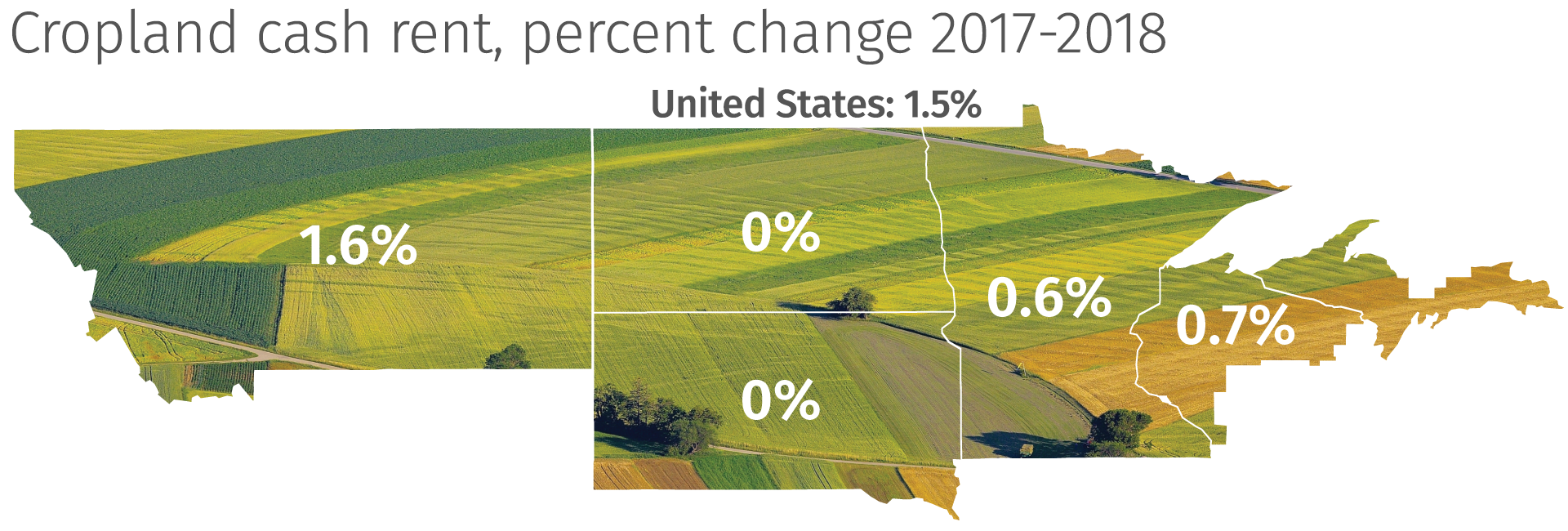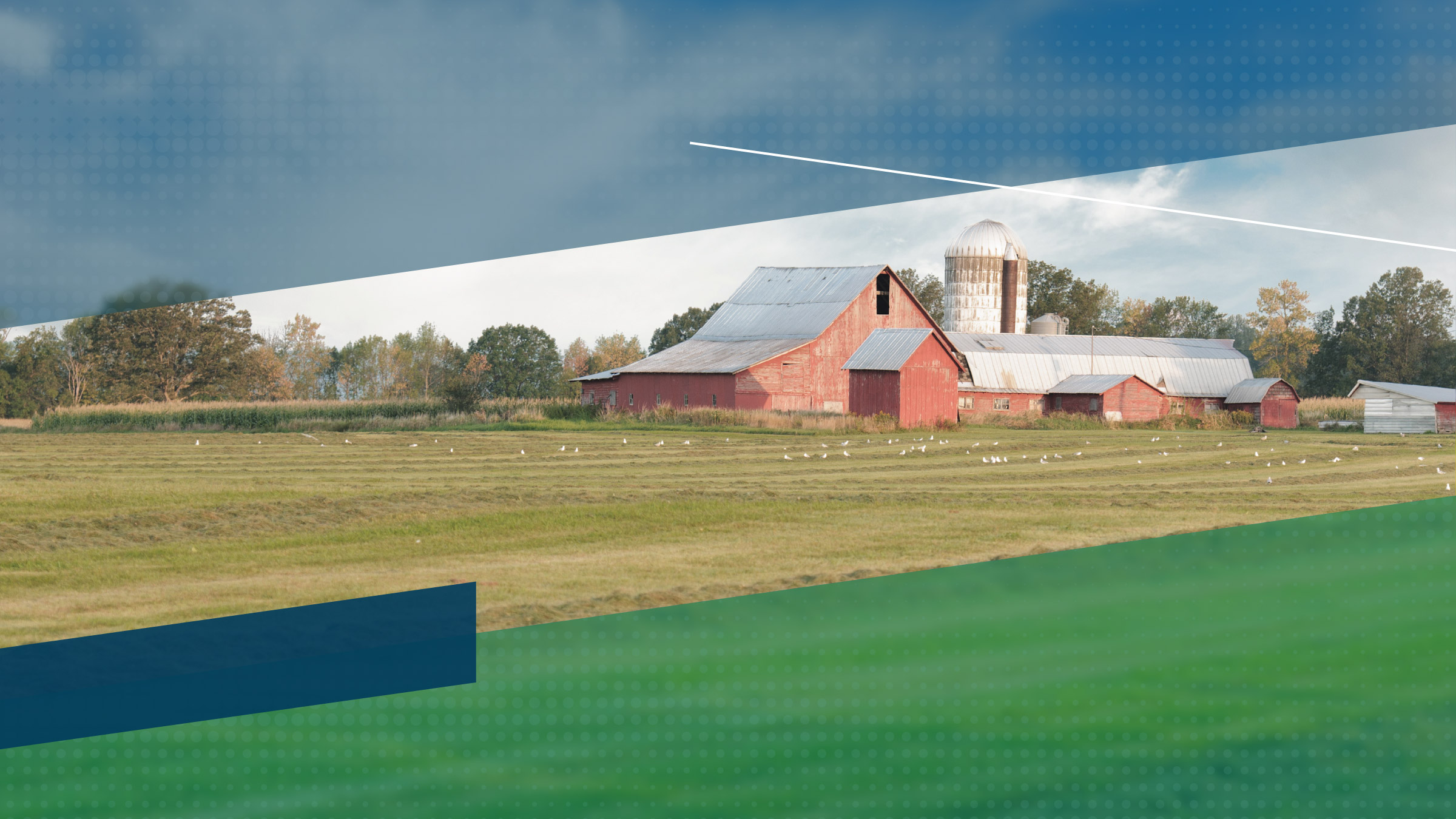Though national economic growth has accelerated, according to recent data, that’s not the case for the farm economy. Agricultural producers have endured multiple years of low commodity prices, which have put financial pressure on farm households. This follows a period of high crop prices and soaring farm incomes, which also drove staggering increases in farmland values; in the Dakotas, for example, inflation-adjusted cropland values roughly doubled from 2010 to 2014. This increase was so fast that many expressed concern that land prices were unsustainably high and might crash after the fortunes of farmers reversed.
But this crash hasn’t happened, at least not yet. Though land values have retreated from their peaks in Ninth District states, the pace of that decline has been generally pretty mild around the region. This trend continued over the past year, according to recently released data from the U.S. Department of Agriculture. As the map below shows, cropland values were generally flat across the district over the past year.

The modest exceptions were South Dakota and Wisconsin, where land values fell slightly (numbers for Wisconsin are for the state as a whole, including portions outside the Ninth District). Wisconsin is an unusual case in that farmland values there continued climbing until last year, in contrast to other states, which saw values peak in 2014 or 2015. South Dakota, like its neighbor to the north, saw some of the nation’s fastest growth during the boom period and has been hit by droughts the past two years.
One reason land values have held up could be that cash rents for farmland have generally been steady as well. The rents paid by farmers to landowners to produce on their land also shot up during the period of high crop prices. As the map below indicates, those rents were flat or increased slightly over the past year even as low crop prices persisted, making them one of several input costs in farming—like fertilizer and pesticide—that ran up during the boom years but haven’t dropped with farm incomes. So cropland can still be used to generate decent rental income, even if the profitability of farming has suffered.

Joe Mahon is a Minneapolis Fed regional outreach director. Joe’s primary responsibilities involve tracking several sectors of the Ninth District economy, including agriculture, manufacturing, energy, and mining.





